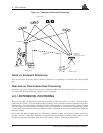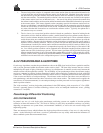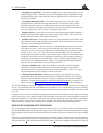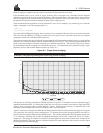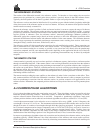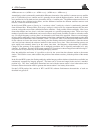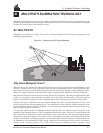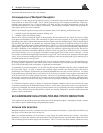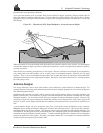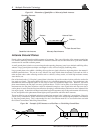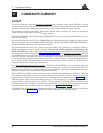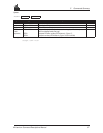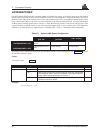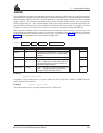
B Multipath Elimination Technology
62 MiLLennium Command Descriptions Manual
obstruction and attenuation are also very common.
Consequences of Multipath Reception
Because GPS is a radio ranging and positioning system, it is imperative that ground station signal reception from
each satellite be of direct line of sight. This is critical to the accuracy of the ranging measurements. Obviously,
anything other than direct line of sight reception will skew and bias the range measurements and thus the
positioning triangulation (or more correctly, trilateration). Unfortunately, multipath is almost always present to
some degree, due to real world conditions.
When a
GPS multipath signal converges at the GPS antenna, there are two primary problems that occur:
1. a multiple signal with amplitude and phase shifting, and
2. a multiple signal with differing ranges.
When a direct signal and multipath signal are intercepted by the
GPS antenna, the two signals will sum according
to the phase and amplitude of each. This summation of signals causes the composite to vary greatly in amplitude,
depending on the degree of phase shift between the direct signal versus the multipath signal. If the multipath signal
lags the direct path signal by less than 90° the composite signal will increase in amplitude (relative to the direct
signal, depending on the degree of phase shift between 0° and 90°). As well, if the multipath signal lags the direct
path signal by greater than 90° but less than 270° the composite signal will decrease in amplitude. Depending on
the relative amplitude of the multipath signal (or signals), the composite signal being processed by the receiver
correlator may experience substantial amplitude variations, which can play havoc with the receiver’s automatic
gain control circuitry (
AGC) as it struggles to maintain constant signal levels for the receiver correlator. A worst
case scenario is when the multipath signal experiences a lag of 180° and is near the same strength as the direct path
signal – this will cause the multipath signal to almost completely cancel out the direct path signal, resulting in loss
of satellite phase lock or even code lock.
Because a multipath signal travels a greater distance to arrive at the
GPS antenna, the two C/A code correlations are,
by varying degrees, displaced in time, which in turn causes distortion in the correlation peak and thus ambiguity
errors in the pseudorange (and carrier phase, if applicable) measurements.
As mentioned in previous paragraphs, it is possible that the received multipath signal has greater amplitude than
the direct path signal. In such a situation the multipath signal becomes the dominant signal and receiver
pseudorange errors become significant due to dominant multipath biases and may exceed 150 metres. For single
point pseudorange positioning, these occasional levels of error may be tolerable, as the accuracy expectations are
at the 40 metre
CEP level (using standard correlator). However, for pseudorange single differencing DGPS users,
the accuracy expectations are at the one to five metre
CEP level (with no multipath). Obviously, multipath biases
now become a major consideration in trying to achieve the best possible pseudorange measurements and position
accuracy.
If a differential reference station is subject to significant multipath conditions, this in turn will bias the range
corrections transmitted to the differential remote receiver. And in turn, if the remote receiver also experiences a
high level of multipath, the remote receiver position solutions will be significantly biased by multipath from both
stations. Thus, when the best possible position solutions are required, multipath is certainly a phenomenon that
requires serious consideration.
B.2 HARDWARE SOLUTIONS FOR MULTIPATH REDUCTION
A few options exist by which GPS users may reduce the level of multipath reception. Among these include: antenna
site selection, special antenna design, and ground plane options.
Antenna Site Selection
Multipath reception is basically a condition caused by environmental circumstances. Some of these conditions you
may have a choice about and some you may not.
Many
GPS reception problems can be reduced, to some degree, by careful antenna site selection. Of primary
importance is to place the antenna so that unobstructed line-of-sight reception is possible from horizon to horizon
and at all bearings and elevation angles from the antenna. This is, of course, the ideal situation, which may not be



